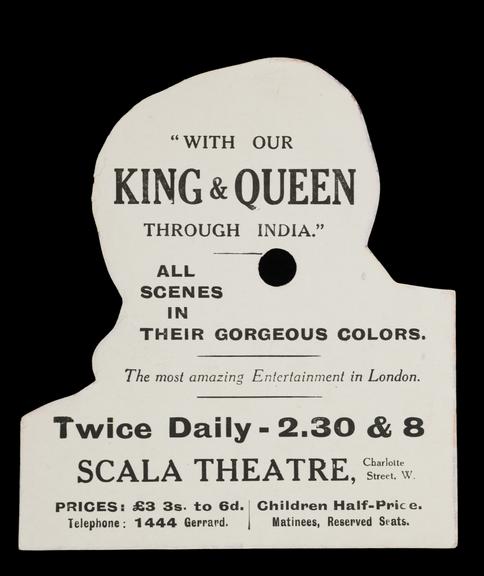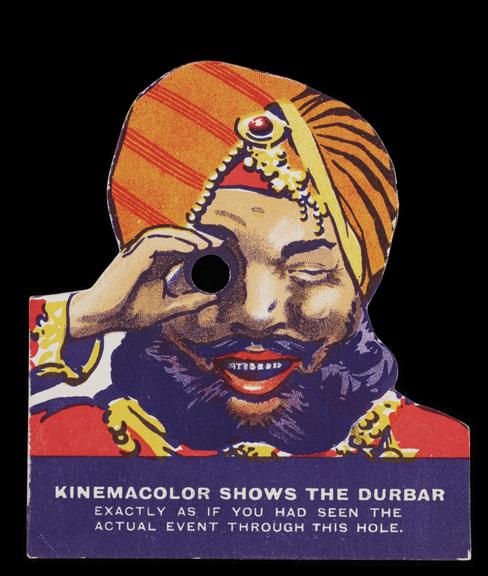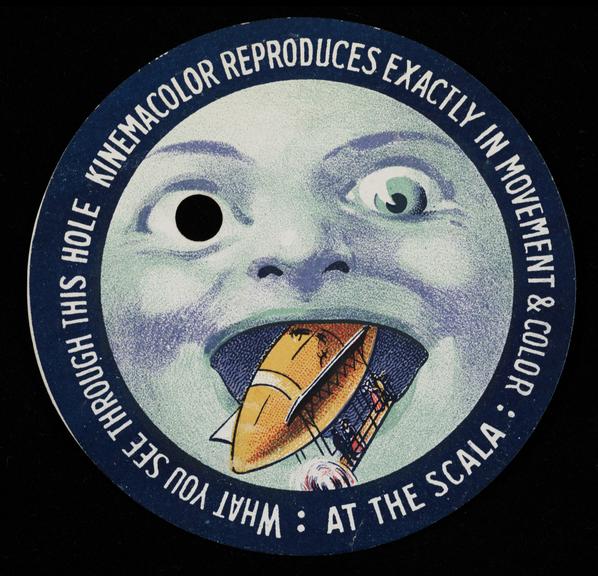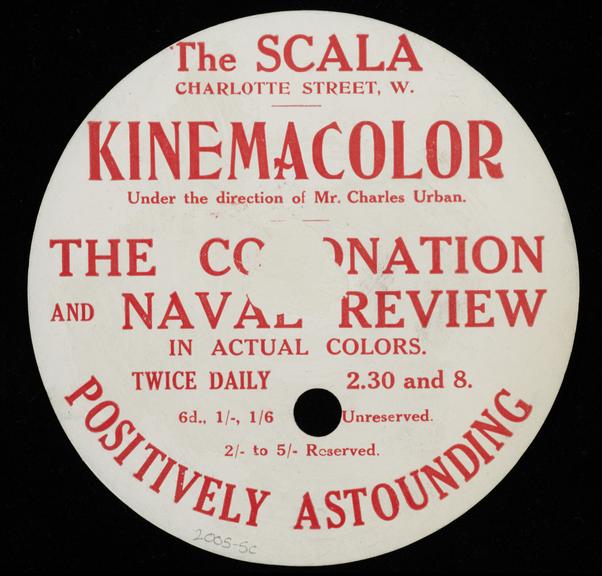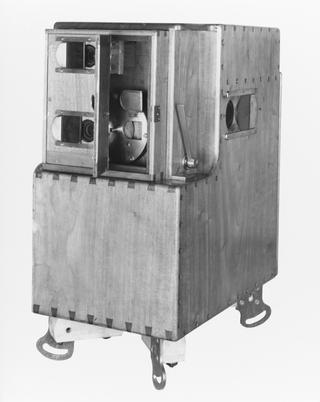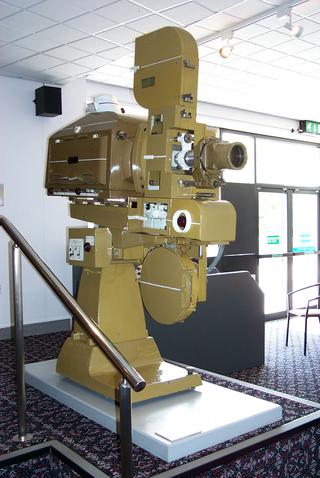Advertisement for The Delhi Durbar
Colour cut out advertisement for the 'With Our King and Queen Through India' Delhi Durbar film. 'Kinemacolor shows the Durbar exactly as if you had seen the actual event through this hole'. Showing a man with a beard wearing a turban looking through a lens he is holding to his right eye. One of two, 1912.
More
With Our King and Queen Through India (1912) was a British documentary, made in the Kinemacolor additive color process.
The film records the 12 December 1911 celebrations in India which marked the coronation of George V and Mary of Teck and their proclamation as Emperor and Empress of India. The film is often referred to as The Delhi Durbar or The Durbar at Delhi. Although it is commonly referred to as a single film, it is more accurate to think of it as a set of films documenting the royal visit to India in December 1911, with the Durbar ceremony as the centrepiece. Different showings of With Our King and Queen Through India would be made up of different sets of the films, so that the show (a more accurate concept) was exhibited in several different lengths. Today only two reels survive, one showing a review of troops after the main ceremony and the other a procession in Calcutta from the end of the royal tour.
- Measurements:
-
overall: 104 mm x 94 mm
- Materials:
- paper (fibre product)
- Object Number:
- 2005-5002/2/7/1
- type:
- advertisement
- Image ©
- The Board of Trustees of the Science Museum
